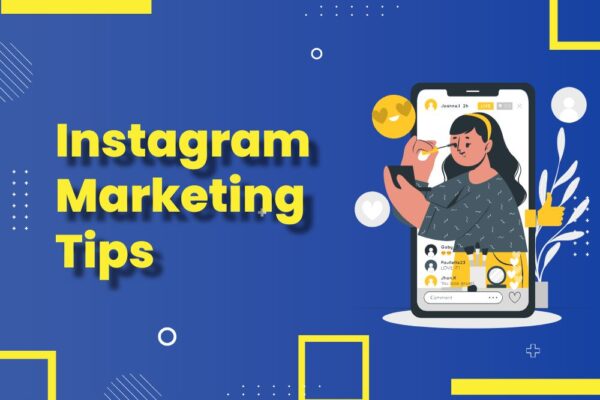Where to Begin with Digital Marketing: A Step-by-Step Guide
In today’s rapidly evolving digital world, marketing has shifted from traditional methods like print ads and word of mouth to online strategies. Digital marketing is now one of the most effective ways to grow a business, attract customers, and build a brand. Whether you’re just starting or transitioning to a digital strategy, this guide will help you navigate the essential steps to get your digital marketing journey off the ground.
Step 1: Set Clear Objectives
Before diving into digital marketing, it’s crucial to define what you want to achieve. Are you aiming to drive more traffic to your website, increase online sales, build brand awareness, or grow your social media presence? Clear objectives will help shape your strategy and give you direction.
For example, if you want to increase website traffic, your focus should be on search engine optimization (SEO), content marketing, and paid online advertising. If you’re trying to boost social media engagement, your strategy may involve creating engaging posts, running social media ads, and leveraging influencer partnerships.
Having clear goals will not only guide your actions but also help you measure your progress and success.
Step 2: Understand Your Audience
Successful digital marketing starts with a deep understanding of your target audience. Who are they? What are their needs, preferences, and pain points? Understanding your audience allows you to create content and campaigns that resonate with them.
To start, create a customer profile. This can include demographics (age, gender, location) and psychographics (interests, values, lifestyle). Tools like Google Analytics, social media insights, and customer surveys can provide useful data to better understand your audience.
Knowing your audience will help you choose the right marketing channels and tailor your message effectively.
Step 3: Choose the Right Platforms
Digital marketing offers various channels to connect with your audience, but trying to be everywhere at once can be overwhelming and ineffective. Instead, focus on one or two platforms that best suit your business and target audience.
For instance, if you’re targeting professionals, LinkedIn is a great platform for B2B marketing. If your brand is visual, Instagram and Pinterest might be more suitable. Facebook offers a broad range of targeting options, making it ideal for various types of businesses.
Prioritize the platforms where your audience spends the most time and where you can deliver the most value.
Step 4: Create High-Quality Content
Content is the backbone of digital marketing. Whether through blog posts, social media updates, videos, or infographics, delivering valuable and relevant content is essential for engaging your audience and building trust. Content marketing helps you communicate with potential customers, showcase your expertise, and ultimately drive conversions.
Focus on creating content that addresses your audience’s questions and needs. This can include:
- Blog posts that provide solutions to common problems in your industry
- Informative videos that demonstrate product usage or highlight key benefits
- Social media posts that spark conversation or showcase behind-the-scenes insights into your brand
Ensure your content is optimized for SEO by including relevant keywords, writing compelling headlines, and using clear calls to action.
Step 5: Leverage SEO (Search Engine Optimization)
SEO is crucial for ensuring that your content gets discovered. It involves optimizing your website and content so that it ranks higher in search engine results, making it easier for potential customers to find you.
Some key aspects of SEO include:
- Keyword research: Identify the words and phrases your audience uses when searching for products or services in your industry.
- On-page optimization: Ensure your content includes relevant keywords, meta descriptions, alt tags for images, and proper heading structures.
- Technical SEO: Make sure your website loads quickly, is mobile-friendly, and has a clean URL structure.
- Backlinks: Earning links from other reputable websites can boost your site’s credibility and search ranking.
SEO takes time to deliver results but is a long-term investment in your digital marketing strategy.
Step 6: Use Social Media Marketing
Social media is one of the most powerful digital marketing tools. It offers direct interaction with your audience, helping you build relationships and foster brand loyalty. Posting regularly on platforms like Instagram, Facebook, LinkedIn, and Twitter keeps your brand in front of customers and creates opportunities for engagement.
Social media marketing involves:
- Organic posts: Regular, unpaid content that keeps your audience engaged and informed.
- Paid ads: Social media platforms offer highly targeted advertising options, allowing you to reach specific demographics based on interests, location, and behaviors.
- Engagement: Reply to comments, participate in conversations, and engage with user-generated content to strengthen your relationship with followers.
Don’t just promote your products—focus on providing value through tips, stories, or behind-the-scenes glimpses of your business.
Step 7: Track and Measure Your Success
The final, but often overlooked step, is tracking and analyzing your digital marketing performance. Use tools like Google Analytics, social media insights, and email marketing reports to measure key metrics such as website traffic, conversion rates, engagement, and return on investment (ROI).
Regularly assess your strategy to identify what’s working and what’s not. Adjust your approach as needed to improve your results. Measuring success not only helps refine your efforts but also ensures that you’re getting the most out of your digital marketing investments.
Conclusion
Starting with digital marketing may seem overwhelming, but by following these steps, you can create a solid foundation for long-term success. Set clear objectives, understand your audience, choose the right platforms, and create valuable content. Combine these efforts with SEO, social media marketing, and regular tracking to grow your online presence and drive meaningful results for your business.






